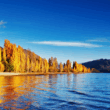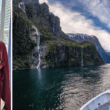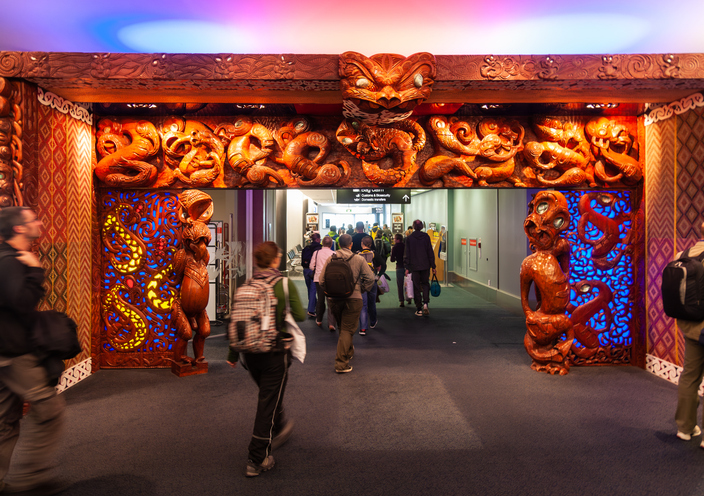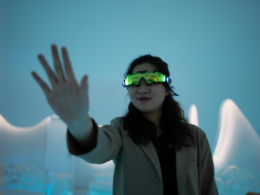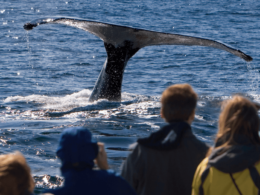In Episode 3 of Checking In, I talk about the significant increase in the International Visitor and Conservation Levy that the New Zealand coalition government has recently announced. This has generated a lot of angry reaction from industry, particularly Tourism Industry Aotearoa, who think it will be bad for business. But it is worth looking at a bit more closely so that we can move beyond political positions on tourism growth and look at the facts dispassionately.
Useful links:
- Beehive announcement https://www.beehive.govt.nz/release/ivl-increase-ensure-visitors-contribute-more-new-zealand
- MBIE – Matt Doocey https://www.mbie.govt.nz/dmsdocument/28322-proposed-changes-to-the-international-visitor-conservation-and-tourism-levy-ivl
- NZ Government potholes investment https://www.beehive.govt.nz/release/government-delivers-funding-boost-fix-potholes
- Stuff article https://www.stuff.co.nz/nz-news/350401272/government-allocates-14b-otago-and-southland-roads#
You can read the full transcript of this episode below:
On Tuesday 3 September the NZ government announced that it will raise the $35 International Visitor Conservation and Tourism Levy to $100 on 1 October.
This has generated a lot of reaction from industry, particularly Tourism Industry Aotearoa and airlines who think it will be bad for business.
In announcing the change, the Minister for Tourism Matt Doocey said that “Data shows that tourism is now back as New Zealand’s second-biggest export earner, generating nearly $10.8 billion in export earnings for the year to March 2023. As we grow, we know that our public infrastructure and conservation estate may face considerable pressure from higher visitor numbers. However, the IVL does not raise enough funding to cover all these costs, with the remainder either covered by the Crown or not addressed. I believe too many costs are falling on the ratepayer and taxpayer”.
The IVL is a relatively recent thing. It was initiated in July 2019 after a decade of sustained high tourism growth which left community social licence in decline and infrastructures at some destinations near breaking point. Over the previous 20-30 years various levies had been proposed and rejected. A $20 green levy for all tourists arriving into NZ was proposed for conservation purposes but rejected by the national government because it would undermine our global competitiveness. They also argued that income from a levy can not be ring fenced for conservation – although obviously the IVL that we have today is ring fenced.
The key point is that any levy is opposed by those who just want more tourism growth. Similarly, proposals to implement differential pricing on the Great Walks whereby international visitors would pay more than local tax payers was resisted for years. Now of course we have both a visitor levy and differential pricing for the Great Walks.
The TIA reaction has been one of strong opposition:
Chief Executive Rebecca Ingram responded that: “At a time when the Government has goals to grow exports and the tourism industry, MBIE’s own impact model from 2022 shows the increase to a $100 IVL alone could result in 48,000 fewer visitor arrivals and strip out $273 million of visitor spend from the economy”. TIA considers that this is a significant barrier to the continuing tourism rebuild.
Rebecca Ingram argues that visitors are already paying their way, not only through the IVL but also with GST and their substantial GDP contribution. The ROI on any government investment in tourism is positively rosy given the billions of dollars of GST that the government receives directly from visitors.”
Personally, my view is that the IVL is absolutely necessary but it is a blunt instrument and it is very limited.
Matt Doocey has said that “The International Visitor Conservation and Tourism Levy (IVL) is our most significant tourism funding tool” and that “too many costs are falling on the ratepayer and taxpayer”.
He is absolutely right.
But if the IVL is the most significant tourism funding tool we have a problem. It is totally inadequate to meet the costs of tourism which currently fall upon local councils, rate payers and tax payers.
The case of Queenstown is illuminating. Queenstown has about 30,000 rate paying residents and about a million visitors per year and growing. Queenstown’s infrastructure is constantly way behind the tourism growth curve. The IVL may help to fund some local toilets and camping areas, but what about waste water, sewerage treatment, electricity supply, Frankton road, one lane bridges, parking spaces – the list goes on. The former mayor begged government to allow the implementation of a bed tax so that tourists could pay for some of these costs, including those staying in short term private rentals such as AirBnB.
You would think that Queenstown would have been a major beneficiary of the IVL over the last five years, given its critical infrastructure issues in the face of constant tourism growth pressures. But Destination Queenstown Chief Executive Mat Woods has said that Queenstown has not received any benefits from the IVL since 2019. Increasing the IVL to $100 will generate $240 million, but when split between tourism conservation investments across the country this amounts to a relatively modest change in funding.
****
The problem is that international tourists incur the debt of taxpayers and ratepayers at every step of their visits. From arrival through customs and biosecurity, to roading infrastructure, waste water, sewerage treatment, the energy grid, civil defence, civil emergency, search and rescue, police, hospitals, Department of Conservation ….
And then there are many specific examples of tourists benefiting directly from the generosity of taxpayers.
1. Tourism New Zealand is an independent Crown entity appointed by government to market NZ internationally (primarily) and funded by the tax payer to the tune of tens of millions of dollars per annum.
2. All 31 regional tourism organisations in NZ have been required to develop Destination Management Plans – all funded by the taxpayer through the MBIE
3. All DMPs come with significant implementation costs, but no one really knows where that funding will come from – it is more than likely that it will come from ratepayers.
4. Then there is roading infrastructure. Tourists in vehicles and campervans are major users of our roads. Some of our roads are used more by tourists than New Zealanders. Examples include the SH6 down the West Coast, SH94 to Piopiotahi Milford Sound through the Homer Tunnel and SH8 to Aoraki Mount Cook. Recently the government announced $1.4 billion funding for transport investment in Otago and Southland, including resealing and rehabilitation works on 934km of state highways across the two provinces, mainly to fix potholes. This is all taxpayer funded.
5. Not to mention the fact that international visitors are eligible for ACC. This is scarcely believable given that the health sector in New Zealand is under so much funding stress. As a rule international visitors pay for their own travel insurance to cover costs of sickness, injury or hospitalisation when travelling. You would be crazy to travel internationally without travel insurance.
a. I know from personal experience that if you get sick in Canada and need to see a doctor, they ask to see your credit card at reception. $1000 will be on your card before you sit down in the waiting room. Most tourists I have spoken to about this simply can’t believe it. Is there anywhere else in the world where tourists get medical care for accidents paid for by the taxpayer?
6. Then there are the DOC Great walks. It costs DOC a lot to build, maintain and staff trails and huts on great walks. These DOC facilities are paid for by the taxpayer. But the Great Walks operate every year at a financial loss.
a. At least now we have differential pricing on the Great Walks whereby international visitors pay more than local tax payers. This is as it should be – New Zealand tax payers should not subsidise international visitors to experience our Great Walks.
7. In most countries access to national parks come with an entry fee. This is pretty standard, and tourists are happy to pay to experience the most outstanding natural areas in the countries that they visit. In Canada you drive up to a booth and barrier arm and explain your intentions and pay based on what you intend to do, where you intend to go and how long you will spend in the park. When you have paid the barrier arm goes up and you go on your way. Visitors to NZ can not believe how lucky they are that our national parks free to access.
There are of course some examples of user pays. The airport funding model is simple. Airports charge airlines (such as Air New Zealand) to use their gates and services, and airlines pass the cost to passengers who pay taxes as part of their airfares. Auckland airport is investing billions of dollars in redevelopment and Air New Zealand thinks it is too expensive. It doesn’t like it because it will have to hand the costs to the traveller and it will become more expensive and threaten continued growth. But the fact is that those who fly are basically paying taxes towards the cost of airport development.
Port Authorities are totally different. Ports serve cruise ships who pay for services they use but not for the infrastructure itself and they don’t want to have to charge passengers. Now ports are coming under pressure to invest in shore power supply to reduce ship pollution and emissions in port. But who pays for that infrastructure? Sydney this year has become the first port in the southern hemisphere to provide shore power supply. It cost $75 million dollars. Should port authorities and local rate payers meet this cost or should it be passed on to cruise companies and cruise passengers? In fact in Europe where some ports now provide shore power supply cruise companies they choose not to use it because it is more expensive than using their own dirty bunker fuels onboard while in port!
So what is needed is an entirely new funding regime for tourism:
That should include the IVL but it is very limited in its scope. While $100 may seem pretty steep it takes little of the burden off tax payers and rate payers, and it can be not increased indefinitely.
The IVL should sit alongside a wider review of tourism funding. Being able to access ACC and free and unlimited access to national parks may have been justifiable in 1980 when we had 465,000 international visitor arrivals. But it makes no sense now when visitor numbers have grown to millions per annum and continue to grow.
What is needed is a review of how tourists pay for facilities and infrastructure – particularly in high tourist use areas. This would allow a conversation about possibly implementing a bed tax consistently across the country – that would make sense. As well as reviewing and updating relevant legislation such ACC and the National Parks Act
Interestingly some of the IVL is earmarked for research through the Tourism Data Partnership Fund. Perhaps some of the IVL could be invested in a research project to provide detailed insights into all of the costs incurred by taxpayers and ratepayers through tourism. That would be very interesting and would usefully inform this discussion.
